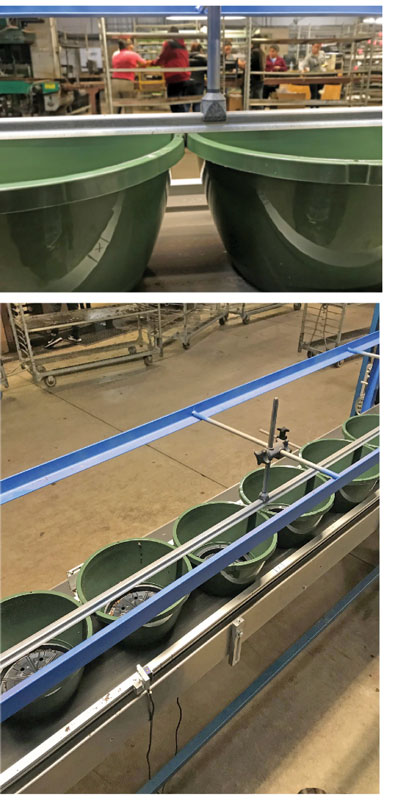3/1/2020
Getting the Most Bang for Your Buck
Bill Swanekamp

While visiting Cultivate this summer in Ohio, we placed an order for a new transplanter from TTA. It’s called the Pack-Planter wireless and it has 48 grippers, which allows up to 800 of the 804-cell bedding plant flats to be transplanted per hour from 288 trays. We don’t always run it at that speed, but it has that capability.
Our plan was to replace a 20-year-old transplanter before it took its last breath, but decided to keep the old transplanter running this year, along with the new one. So far, both machines are running fine and the new one is exceeding our expectations.
Still, as you know, our expectations can change pretty quickly in this industry. As we programmed the new transplanter and watched it run we became more anxious to test its full capabilities. Although we purchased the transplanter to handle our flat needs, such as 804s, 4 in., 5 in. and 1801s, it became clear this machine could do more than we anticipated. I wanted to get the most out of this machine to save on labor costs, and as the title says, get the most bang for my buck. (Oh, by the way—the transplanter cost over $250,000. Need I say any more?)
Pictured: Kube-Pak developed its own “railing system” for TTA’s PackPlanter to hold hanging baskets in place while they’re being fed into the transplanter.
One day, we hypothetically asked the question, “Can this machine handle planting 10-in. hanging baskets?” Our maintenance man said the TTA representative told him it could do hanging baskets if you used a carrier tray that held them in a straight line and uniformly spaced. Correct spacing is important because the transplanter has to have the same reoccurring locations to plant the plugs in the right part of each hanging basket.
With a little excitement in our hearts and a gleam in our smile, we asked our purchasing department to find that carrier tray. About a week later, the 10-in. hanging basket carrier tray arrived. All excited, we put the carrier tray on the transplanter and then our joy disappeared. The carrier was made for a 10-in. hanging basket … that is, 10 in. in outside diameter, not inside diameter. We use a true 10-in. hanging basket that’s 10 in. of inside diameter.
With our joy turned to sadness, we asked the next question: “Is there another way to hold the 10-in. hanging baskets in the correct position?” We all said we would think about it. The next day, we came to work and BOOM!—the lights in our minds turned on and we saw the solution. Why not build a rail over the top of the hanging baskets as they came down the conveyor belt, which would hold them tight to the conveyor and another rail to keep them in a straight line?
This idea had a number of advantages over the carrier tray: 1) The carrier tray is only used while filling and transplanting the 10-in. hanging basket; and 2) after each basket is filled and planted, the empty carrier tray has to be brought back to the beginning of the pot-filling equipment. This step adds one or two people to the whole production process and therefore costs money.
With newfound enthusiasm we designed the railing system, ordered the parts and three days later it was installed. Now came the true test—would it work? After ironing out some of the bugs, we were able to run the 10-in. hanging baskets flawlessly down the transplanter. This eliminated four people from the job and saved us about 25 cents per hanging basket in labor.
In fact, we learned something else very valuable: we were running the transplanter at speed 2; it could run at speed 10. The only trouble was that our flat filler couldn’t fill the hanging baskets any faster. Wait a minute, that just does not seem right! A little more investigation revealed that the speed control on the flat filler was broken and once replaced we could produce 35 hanging baskets per hour instead of just 14. An improvement of 2.5 times. Now we were cooking.
Since we bought the transplanter, we’ve been able to dramatically increase the number of total units we can put through the machine. This in turn will reduce our operating costs and help us get the most bang for our buck. GT
Bill Swanekamp is president of Kube-Pak Corp., Allentown, New Jersey.